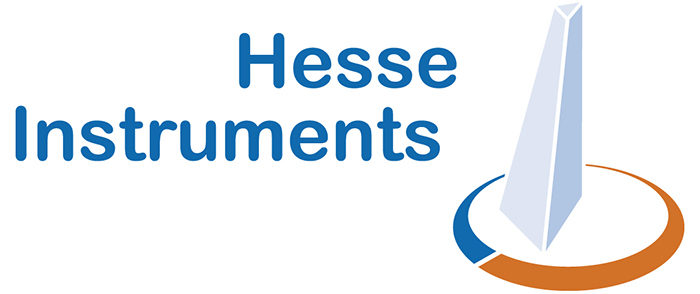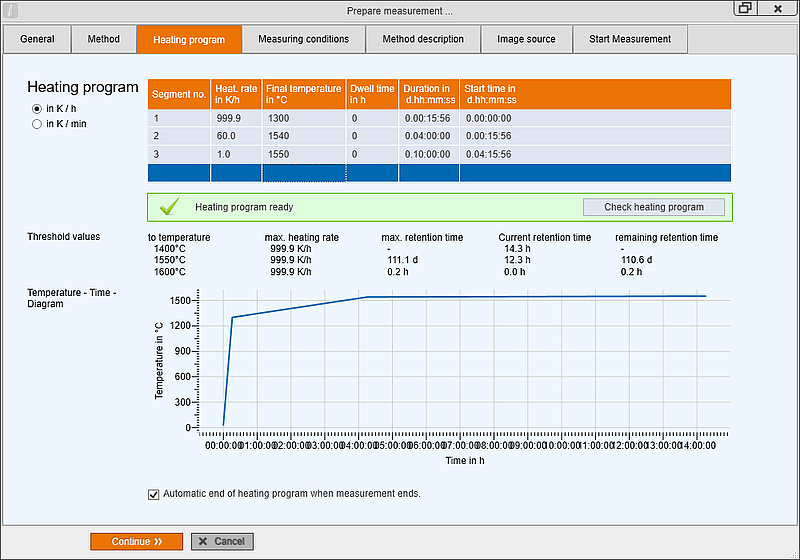Main features
The module for extended heating rates can easily be integrated into an existing version of EMI III. The installation of the module changes the range of functions and the user interface so that heating profiles with low heating rates can be entered during the measurement preparation.
With the module you can switch the unit of the heating rate between Kelvin per minute (K/min) and Kelvin per hour (K/h) while you enter the heating profile during the measurement preparation. This way, the minimum possible heating rate is lowered from 0.1 K/min to 0.1 K/h, which corresponds to a heating rate of 0.0017 K/min. As these low heating rates approximate a dwell time of the furnace, a sophisticated security mechanism was implemented in order to avoid that furnaces are run at critical temperatures for too long.
This enables you to enter heating profiles that correspond to industrial sintering or de-binding processes. Additionally temperature regions with quickly proceeding or critical material processes can be monitored closely. This makes the module a perfect tool in the fields of research and development of new materials and processes as well as quality control for determining process errors.

